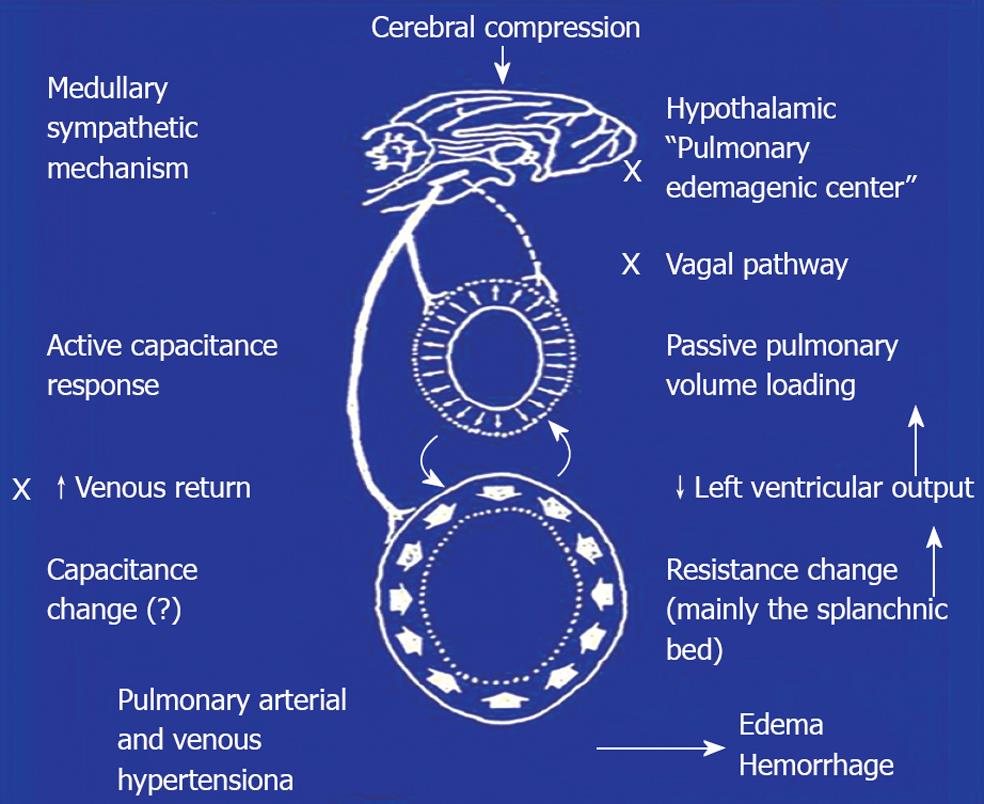Copyright
©2012 Baishideng.
World J Crit Care Med. Apr 4, 2012; 1(2): 50-60
Published online Apr 4, 2012. doi: 10.5492/wjccm.v1.i2.50
Published online Apr 4, 2012. doi: 10.5492/wjccm.v1.i2.50
Figure 2 Schematical representation of the neural and hemodynamic mechanisms involved in the pulmonary edema and hemorrhage following cerebral compression.
The hypothalamic “pulmonary edemagenic center” and vagal pathway are not important. Activation of the medullary sympathetic mechanism causes vasoconstriction of the systemic resistance and capacitance vessels, resulting in blood shift from the systemic to pulmonary circulation. A dramatic decrease in the left ventricular output produces pulmonary volume loading. Subsequently, pulmonary arterial and venous hypertension ensue, and finally, severe lung edema and hemorrhage.
- Citation: Su CF, Kao SJ, Chen HI. Acute respiratory distress syndrome and lung injury: Pathogenetic mechanism and therapeutic implication. World J Crit Care Med 2012; 1(2): 50-60
- URL: https://www.wjgnet.com/2220-3141/full/v1/i2/50.htm
- DOI: https://dx.doi.org/10.5492/wjccm.v1.i2.50









